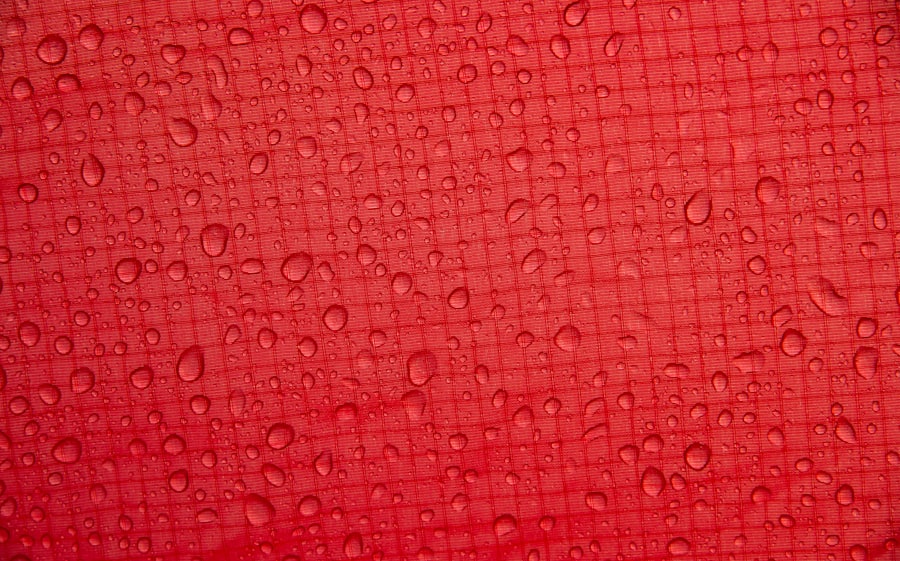After undergoing a hair removal treatment, the importance of post-treatment care cannot be overstated. You may find that your skin is sensitive and requires special attention to ensure optimal healing and results. It is essential to follow the aftercare instructions provided by your practitioner closely.
This may include avoiding hot showers, saunas, or intense workouts for a few days to minimize irritation. Keeping the treated area clean and moisturized can also help soothe any discomfort and promote healing. In addition to physical care, you should also be mindful of how your skin reacts in the days following the treatment.
You might experience some redness or swelling, which is entirely normal. Applying a gentle, fragrance-free moisturizer can help alleviate these symptoms. If you notice any unusual changes, such as excessive swelling or blistering, it’s crucial to reach out to your practitioner for advice.
Remember, taking care of your skin post-treatment is vital for achieving the best possible results and ensuring your comfort during the healing process.
Key Takeaways
- Post-treatment care is crucial for optimal results and may include avoiding sun exposure and using recommended skincare products.
- Temporary side effects of the treatment may include redness, swelling, and mild discomfort, which typically subside within a few days.
- Long-term results of the treatment may include reduced hair growth and smoother skin, with maintenance sessions recommended for best outcomes.
- Sun exposure precautions, such as using sunscreen and avoiding direct sunlight, are important to protect the skin post-treatment.
- Understanding hair growth cycles is essential for scheduling maintenance sessions and optimizing the effectiveness of the treatment.
- Maintenance sessions may be necessary to maintain the results of the treatment and are typically scheduled at regular intervals.
- Potential risks and complications of the treatment should be discussed with a professional during a consultation to ensure informed decision-making.
- Consultation with a professional is recommended to assess individual needs and determine the most suitable treatment plan for the best results.
Temporary Side Effects
As with any cosmetic procedure, temporary side effects are a common occurrence following hair removal treatments. You may experience mild discomfort, redness, or swelling in the treated area. These side effects typically subside within a few hours to a few days, depending on your skin type and sensitivity.
It’s important to remain patient during this time, as these reactions are often a sign that your body is responding to the treatment. In some cases, you might also notice slight changes in pigmentation or texture in the treated area. This can be particularly true for individuals with darker skin tones, who may be more prone to hyperpigmentation.
While these effects can be concerning, they usually resolve on their own as your skin heals.
Staying hydrated and avoiding sun exposure can also aid in the recovery process.
Long-Term Results

The long-term results of hair removal treatments can be quite rewarding, offering you smoother skin and reduced hair growth over time. Many individuals find that they experience a significant decrease in hair density after completing a series of sessions. This means that not only will you enjoy less frequent shaving or waxing, but the hair that does grow back may be finer and lighter in color.
As you continue to follow your treatment plan, you may find that the results become even more pronounced. It’s essential to have realistic expectations regarding the longevity of these results. While many people enjoy long-lasting effects, some may require maintenance sessions to keep unwanted hair at bay.
Factors such as hormonal changes, genetics, and individual hair growth cycles can influence how long the results last. By staying informed and committed to your post-treatment care and maintenance plan, you can maximize the benefits of your hair removal treatment and enjoy smooth skin for years to come.
Sun Exposure Precautions
| Precaution | Recommendation |
|---|---|
| Use sunscreen | Apply sunscreen with SPF 30 or higher, and reapply every 2 hours |
| Wear protective clothing | Wear long-sleeved shirts, pants, and a wide-brimmed hat |
| Avoid peak sun hours | Avoid sun exposure between 10am and 4pm |
| Seek shade | Stay in the shade, especially during peak sun hours |
| Wear sunglasses | Wear sunglasses that block both UVA and UVB rays |
One of the most critical aspects of post-treatment care is protecting your skin from sun exposure. After undergoing hair removal treatments, your skin may be more sensitive to UV rays, making it essential to take precautions to avoid sunburn or pigmentation changes. You should consider wearing protective clothing or seeking shade whenever possible, especially during peak sun hours.
Additionally, applying a broad-spectrum sunscreen with a high SPF is crucial for safeguarding your skin. Even if you feel that your skin has returned to normal after a few days, it’s wise to continue being cautious about sun exposure for several weeks following your treatment. The healing process can take time, and exposing freshly treated skin to sunlight can lead to complications such as hyperpigmentation or irritation.
By prioritizing sun protection, you not only enhance your treatment results but also promote overall skin health.
Hair Growth Cycles
Understanding hair growth cycles is vital when it comes to managing expectations for hair removal treatments. Hair grows in three distinct phases: anagen (growth), catagen (transitional), and telogen (resting). The effectiveness of hair removal treatments largely depends on targeting hair during its anagen phase when it is actively growing.
Since not all hairs are in the same phase at any given time, multiple sessions are often necessary to achieve optimal results. You may notice that some areas of your body require more treatments than others due to variations in hair growth cycles. For instance, facial hair may grow at a different rate compared to leg hair.
This variability means that patience is key; while you might see immediate results in some areas, others may take longer to respond. By understanding these cycles and adhering to your treatment schedule, you can ensure that you are effectively targeting hair at its most vulnerable stage.
Maintenance Sessions
Once you have completed your initial series of hair removal treatments, maintenance sessions become an integral part of your long-term care plan. These sessions are designed to address any remaining hairs that may have been missed during previous treatments or those that have entered the anagen phase since your last appointment. Depending on your individual needs and hair growth patterns, maintenance sessions may be scheduled every few months or as needed.
You might find that these maintenance appointments are shorter and less frequent than your initial treatments, which can be a relief. Many individuals report that they require fewer sessions over time as their hair becomes sparser and finer. Staying consistent with these maintenance sessions not only helps maintain your results but also allows you to enjoy smooth skin without the hassle of traditional hair removal methods.
Potential Risks and Complications
While hair removal treatments are generally safe and effective, it’s essential to be aware of potential risks and complications that could arise. Some individuals may experience adverse reactions such as burns, scarring, or changes in skin texture if the procedure is not performed correctly or if proper aftercare is not followed. It’s crucial to choose a qualified practitioner who uses reputable equipment and follows safety protocols to minimize these risks.
Additionally, certain skin types or medical conditions may increase the likelihood of complications. For instance, individuals with darker skin tones may be at a higher risk for hyperpigmentation if not treated appropriately. Before undergoing any treatment, it’s wise to discuss your medical history and any concerns with your practitioner to ensure that you are a suitable candidate for the procedure.
Being informed about potential risks allows you to make educated decisions regarding your hair removal journey.
Consultation with a Professional
Before embarking on any hair removal treatment, consulting with a professional is an essential step in ensuring a successful experience. During this consultation, you will have the opportunity to discuss your goals, ask questions about the procedure, and address any concerns you may have regarding potential side effects or risks. A qualified practitioner will assess your skin type and hair characteristics to determine the most suitable treatment plan tailored specifically for you.
This initial consultation is also an excellent time for you to express any preferences or expectations regarding the outcome of the treatment. Open communication with your practitioner will help establish trust and ensure that both parties are aligned on what to expect throughout the process. By taking this proactive approach and seeking professional guidance, you can embark on your hair removal journey with confidence and clarity, setting yourself up for success in achieving smooth, hair-free skin.
If you’re curious about what to expect days after laser hair removal, you may also be interested in reading this article on how to prepare for your laser hair removal appointment. This informative piece provides tips and advice on how to get the best results from your treatment and ensure a smooth recovery process. It’s a great resource for anyone considering laser hair removal as a long-term solution for unwanted hair.
FAQs
What is laser hair removal?
Laser hair removal is a cosmetic procedure that uses a concentrated beam of light (laser) to remove unwanted hair. The laser targets the pigment in the hair follicle, damaging the follicle and inhibiting future hair growth.
What can I expect in the days after laser hair removal?
In the days following laser hair removal, it is normal to experience some redness and swelling in the treated area. You may also notice some hair shedding as the damaged hair follicles expel the treated hair.
Is it normal to experience discomfort after laser hair removal?
It is common to experience some discomfort such as a sunburn-like sensation or mild itching in the treated area after laser hair removal. This typically subsides within a few days.
How should I care for my skin after laser hair removal?
After laser hair removal, it is important to keep the treated area clean and moisturized. Avoid sun exposure and use sunscreen to protect the skin. It is also recommended to avoid hot showers, saunas, and strenuous exercise for a few days.
When will I see results after laser hair removal?
You may start to see a reduction in hair growth within a few weeks after your first laser hair removal session. However, multiple sessions are usually required to achieve optimal results.





